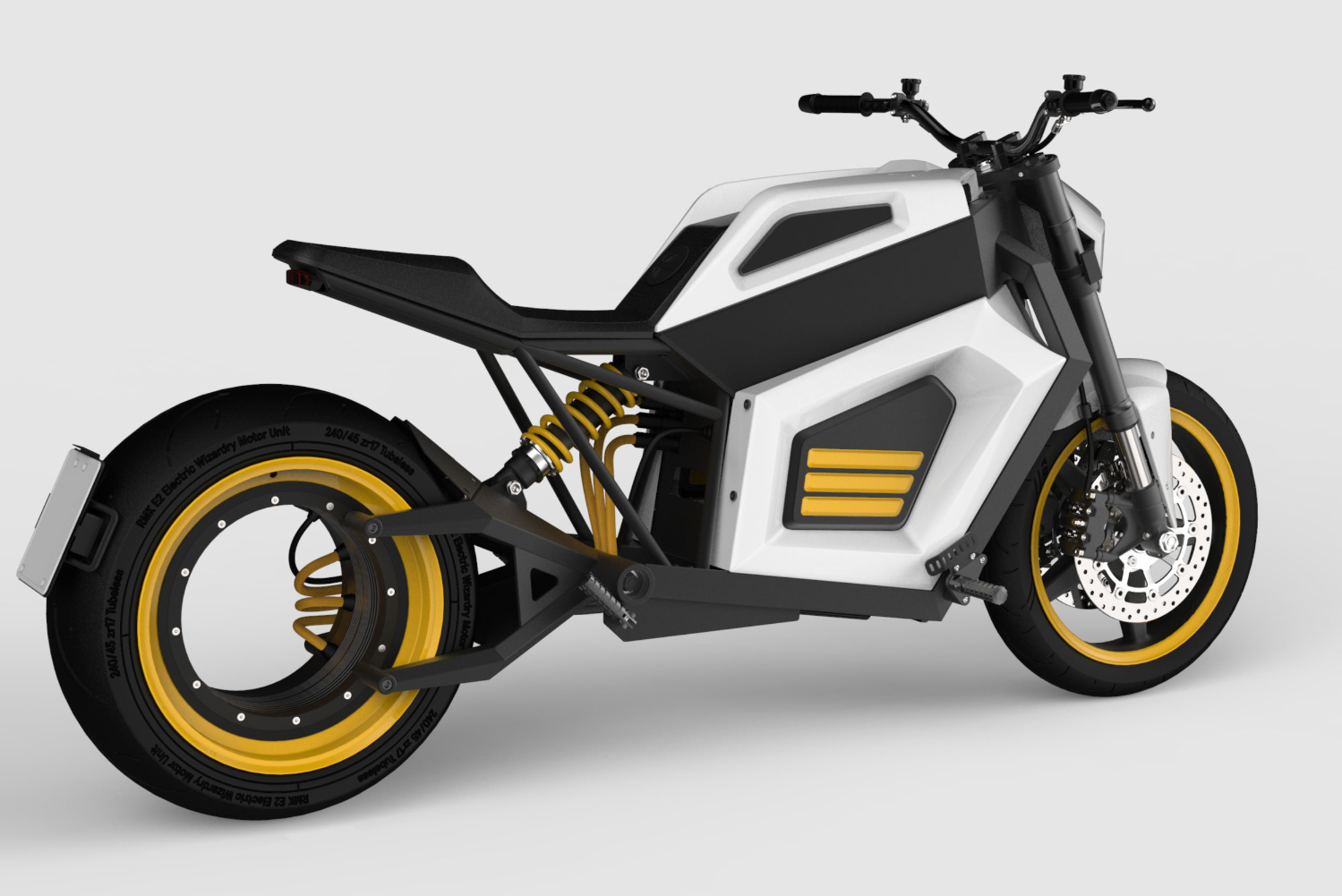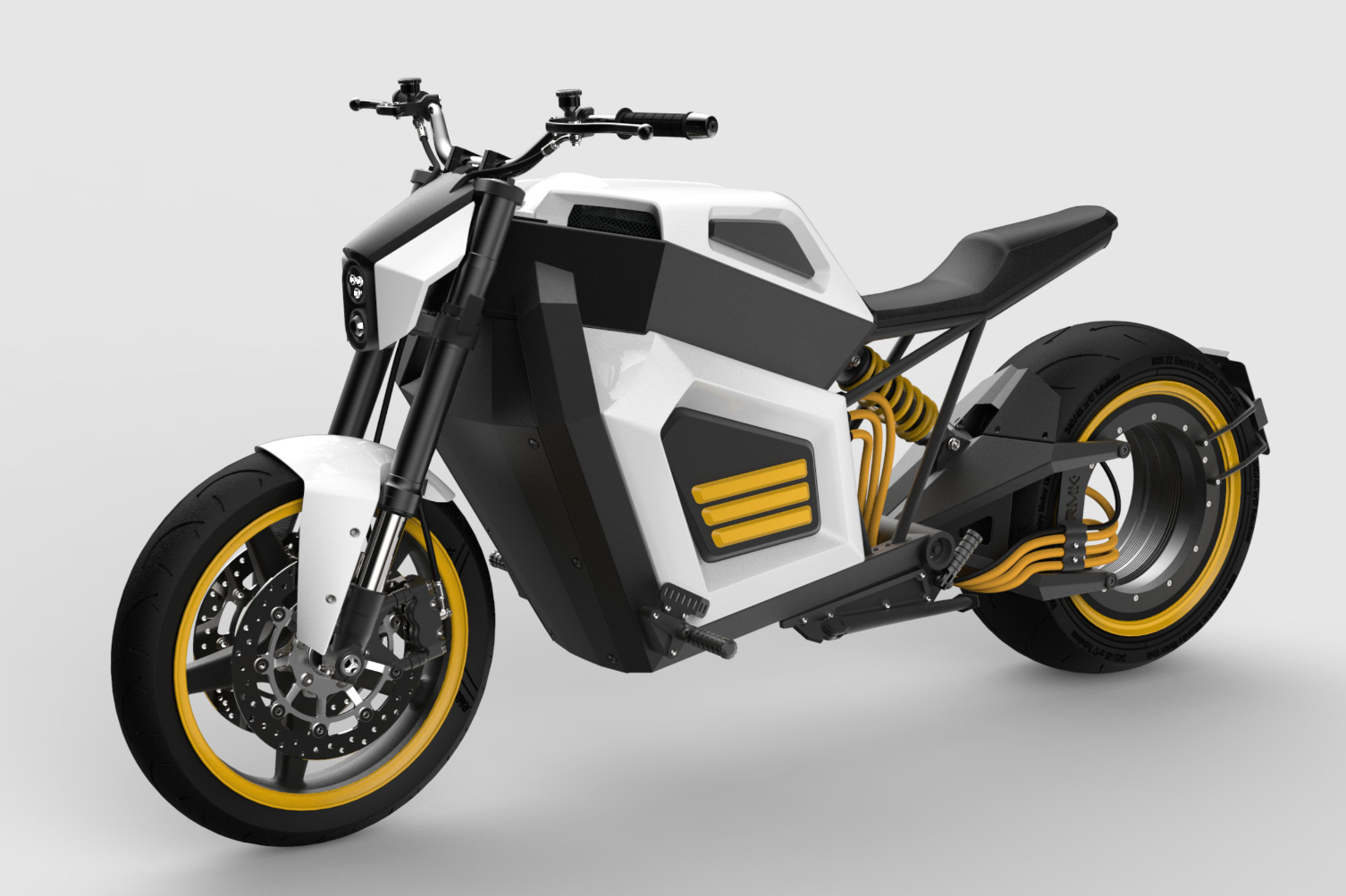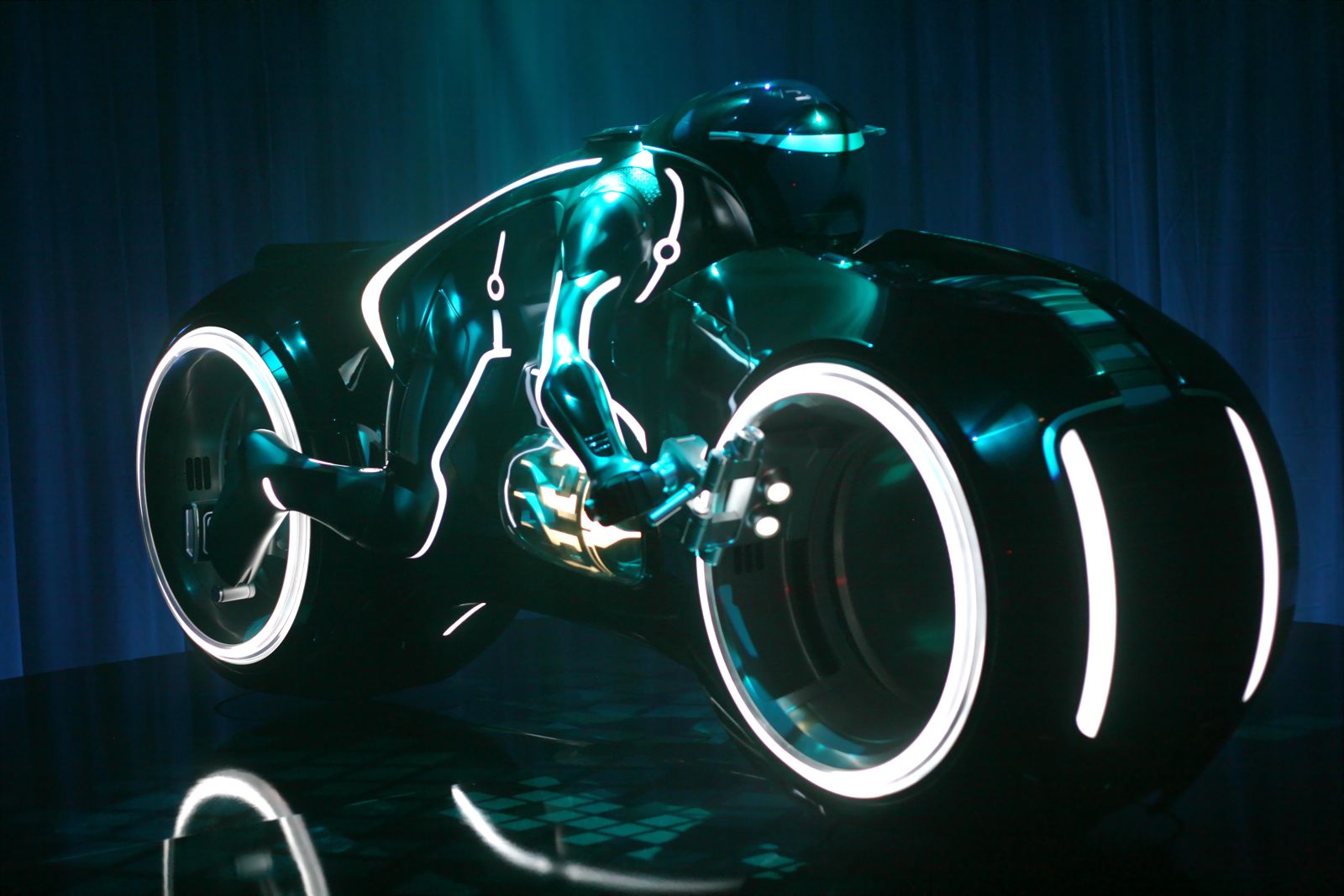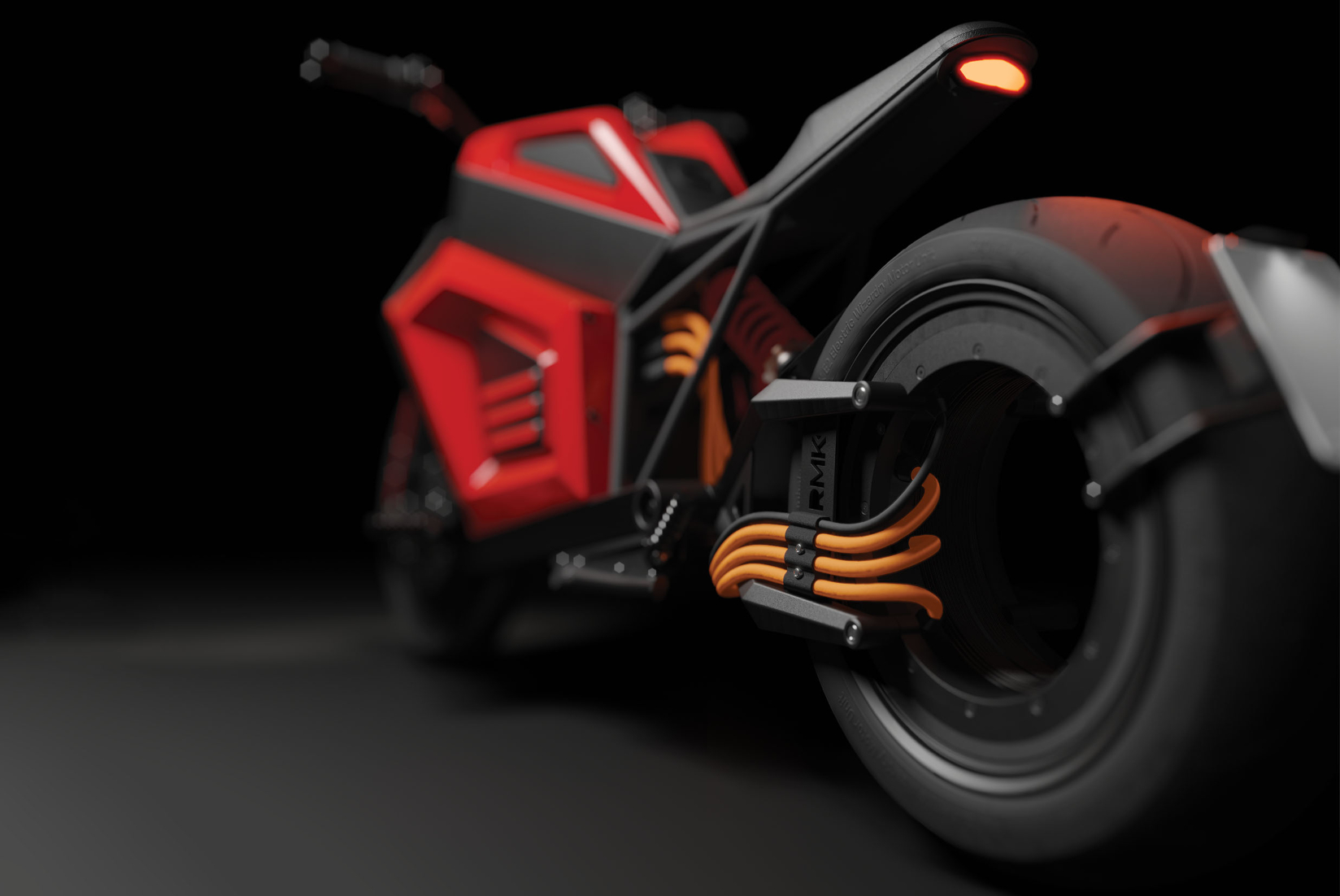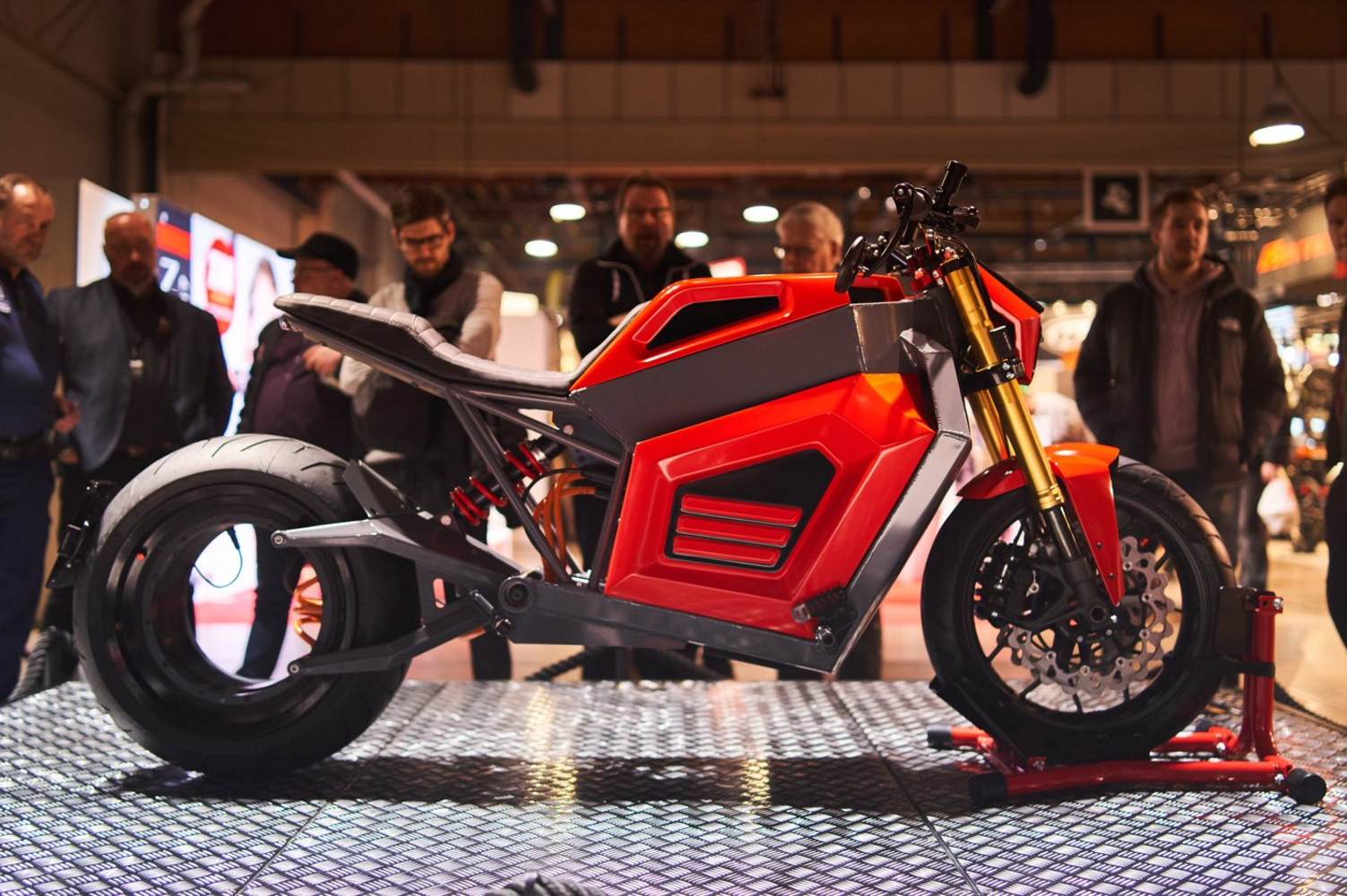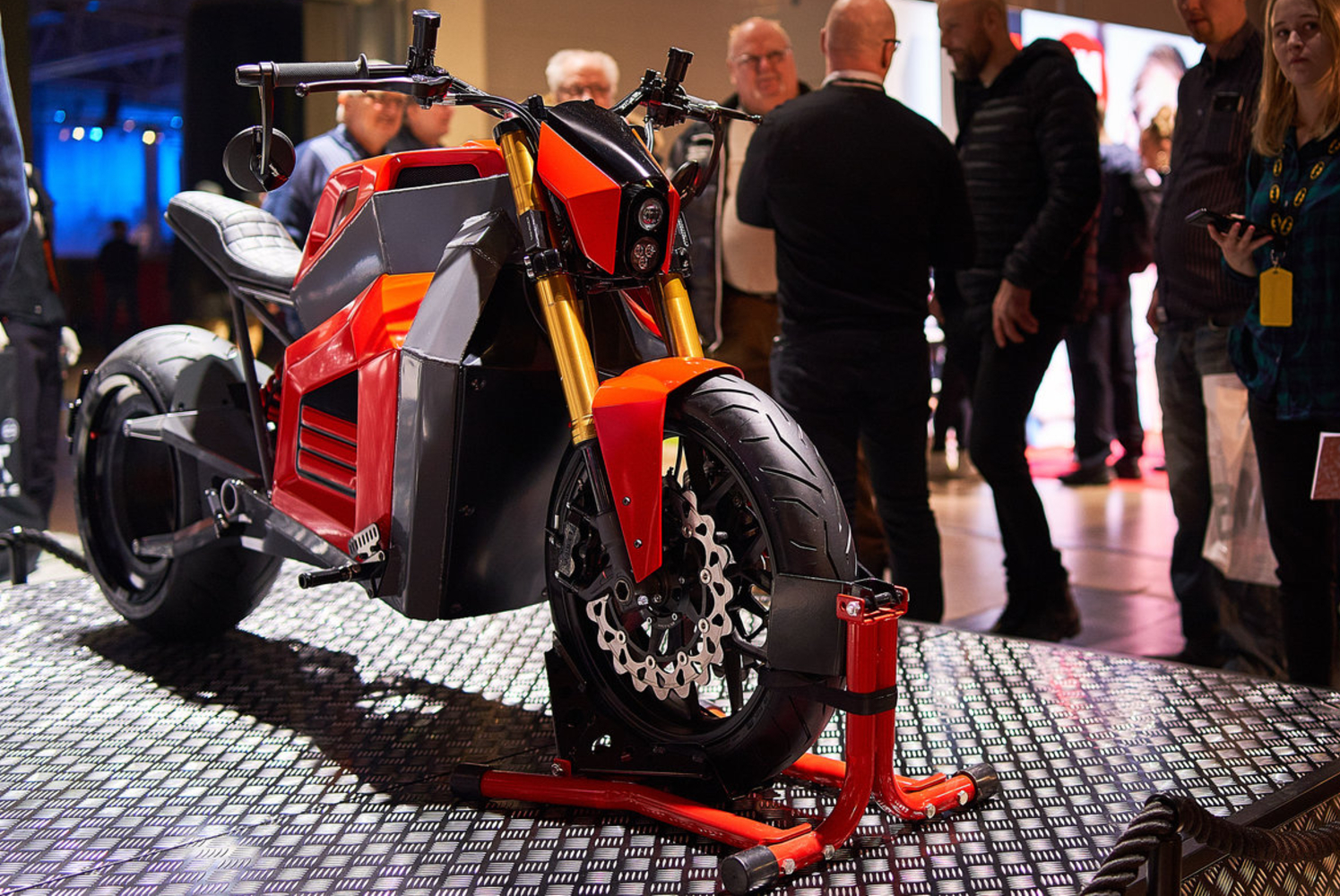Electric motorcycles, like electric cars, differ from internal combustion engine-powered vehicles in one respect because they have many fewer parts. Finnish electric motorcycle company RMK’s E2 goes one step further by eliminating the rear wheel hub. Visual references to Disney’s Tron Light Cycle aside, the stunning E2 is getting closer to production, according to Electrek.
The E2’s missing rear hub is sure to elicit the most questions, but the bike’s rim motor design is fascinating to watch in motion. What appears to be a wheel is the E2’s electric motor. The tire rotates around the motor, which doesn’t move. According to RMK, changing the E2’s tires is no more difficult than with traditional wheels using conventional tools.
RMK states the E2 will have an approximately 100 miles per hour electronically limited top speed and a 120 to 180-mile range per charge. The onboard charger will recharge the battery to 80% power in two to three hours, the company says, which means a full charge is likely to take four to six hours. The E2 will support DC fast charging, but no time-to-charge specs are available.
The bike will produce a maximum 50 kW or 67 horsepower of peak power with 320 Newton-meters or 236 foot-pounds of torque. Production version E2s will weigh approximately 440 pounds, with the full torque available from a standing stop, so even though the top speed is relatively low, the bike will accelerate rapidly. RMK has not released actual acceleration tests results.
Electric motorcycles don’t use clutches or require shifting. The handlebar right side brake lever will control the front brake. The left side lever, which controls the clutch in conventional motorcycles, will use regenerative braking as the rear brake.
RMK plans to begin E2 production in late 2019 and to begin customer deliveries in early 2020. Prospective owners can pre-order an RMK E2 with a $2,300 refundable deposit against the full $28,900 price. As the E2’s production gears up, RMK will fill customer orders in the order of the pre-order reservations.
The RMK E2’s price tag may seem high, especially in light of powerful electric motorcycles already on the market such as the Zero DSR. The E2’s price is comparable to the new Harley-Davidson Livewire, however, which should commence customer deliveries this month. RMK’s debut model isn’t intended to be a motorcycle for the masses, and, at least for the first release, the E2 is most likely to appeal to enthusiasts who want to add an electric two-wheeler to their collections.
Editors' Recommendations
- Audi’s electric 2022 RS E-Tron GT is a concept that escaped the drawing board
- Here’s how Audi increased the electric E-Tron’s driving range


